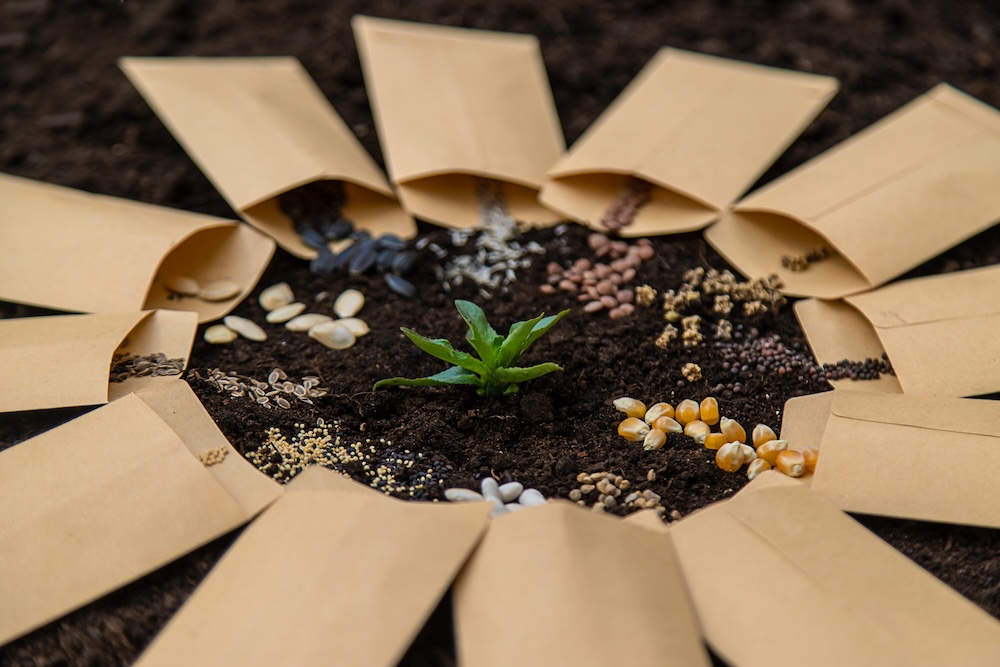The Language We Use Shapes the Future We Build
“Sustainability” has become the go-to term for eco-conscious living — printed on tote bags, whispered in boardrooms, and stamped on product labels. But in 2025, it’s time we ask a hard question:
Is being sustainable enough anymore?
The answer, increasingly, is no.
That’s where regeneration comes in — a deeper, bolder, more honest framework for healing the planet. Where sustainability seeks to do less harm, regeneration seeks to restore, revive, and renew. It’s about giving back more than we take.
And it’s the direction forward.
What Is Regeneration?
Regeneration means working in alignment with nature’s own systems to revive soil, ecosystems, communities, and even culture. It goes beyond maintaining the status quo. It asks us to participate in the healing and rebuilding of what’s been lost or damaged.
It’s not just an environmental term — it’s a mindset.
To regenerate is to:
- Rebuild fertility in the soil
- Revive pollinator habitats and clean waterways
- Restore biodiversity and cultural traditions
- Reclaim balance in systems that have been pushed beyond their limits
Regeneration is dynamic, alive, and reciprocal — and unlike many “sustainable” models, it doesn’t stop at neutral.
Why Sustainability Isn’t the End Goal Anymore
Sustainability says: let’s reduce emissions, minimize waste, and slow our damage.
That’s a necessary starting point — but it doesn’t reverse the harm already done.
If the house is on fire, “sustainable” means throwing less gasoline on it. Regeneration means turning off the gas, rebuilding the house, and planting trees around it.
In 2025:
- Climate tipping points are being crossed
- Biodiversity loss has reached critical thresholds
- Eco-anxiety is rising among younger generations
We’re past the point where minimizing harm is enough. Now we need to rebuild.
Key Differences: Regeneration vs. Sustainability
| Focus | Sustainability | Regeneration |
|---|---|---|
| Goal | Maintain balance | Restore vitality |
| Relationship | Reduce harm to nature | Partner with and empower nature |
| Impact | Neutral or less negative | Net-positive, life-giving |
| Timeframe | Stabilize present | Rebuild the future |
| Mentality | Control and limit | Collaborate and renew |
Regeneration is rooted in abundance, not scarcity. It asks, How can we help ecosystems thrive? — not just, How do we use less?
Examples of Regenerative Systems
Regenerative Agriculture
Unlike industrial or even organic farming, regenerative agriculture focuses on soil health, water cycles, and carbon capture through techniques like:
- No-till planting
- Cover cropping
- Rotational grazing
- Agroforestry
These methods pull carbon from the air, revive soil microbiomes, and increase biodiversity — all while producing nutritious food.
Regenerative Design and Architecture
Instead of minimizing energy use alone, regenerative buildings:
- Create more energy than they consume (net-positive)
- Filter and reuse water
- Support indoor ecosystems like green walls and rooftop gardens
- Use biomimicry to function like living organisms
This design philosophy sees buildings as part of nature — not separate from it.
Regenerative Culture and Communities
Regeneration also happens at the social level:
- Local economies that reinvest in the land and people
- Storytelling that reconnects us to place
- Mutual aid systems that distribute care, not just goods
A regenerative culture feeds the human spirit and the soil beneath it.
The Emotional Shift: From Fear to Participation
One of the quiet revolutions of regeneration is emotional. Where sustainability often feels like sacrifice and guilt — regeneration feels like belonging and purpose.
People are more likely to stay engaged when they feel:
- Empowered, not overwhelmed
- Connected to nature, not distanced from it
- Aligned with a vision, not shamed into behavior change
Regeneration is not about doing less. It’s about becoming more human — more alive — through our relationship with the Earth.
How to Start Living Regeneratively
You don’t need to live off-grid or buy a farm to start regenerating. You can begin wherever you are.
Try:
- Composting to restore soil
- Supporting regenerative farms at markets
- Letting part of your yard rewild
- Hosting a seed swap or native plant exchange
- Choosing brands that give back more than they take
- Sharing knowledge in your community
Every act of regeneration is an act of reconnection — with the Earth, with each other, and with our future.
A Closing Thought: From Less Bad to More Good
Sustainability was the call of the early 2000s. It brought awareness, urgency, and useful frameworks.
But now, in 2025, the call is changing.
It’s not just about slowing collapse. It’s about building something better.
Regeneration is not just a trend — it’s the return of a relationship we never should have lost.









Reader Interactions